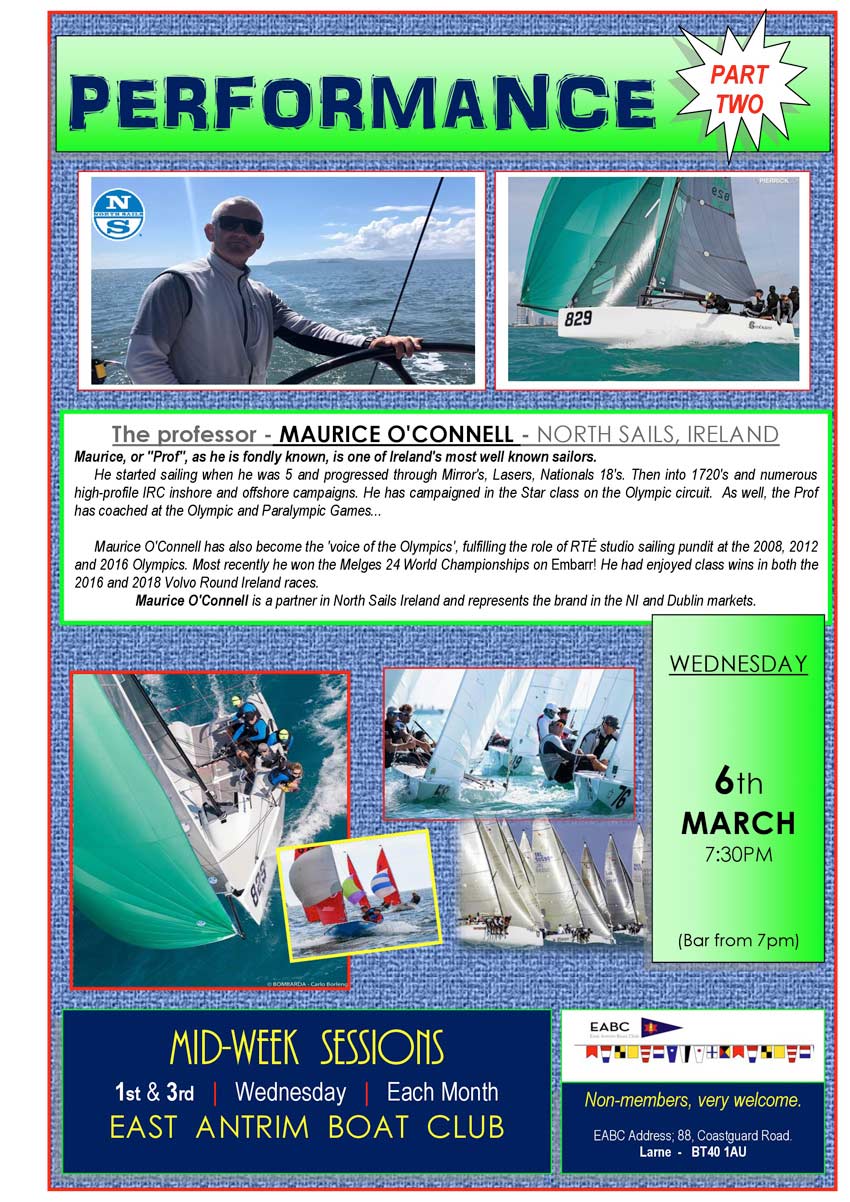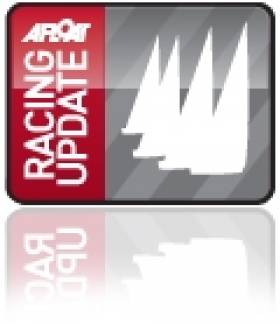Displaying items by tag: EABC
Hosted by East Antrim Boat Club as part of their hugely successful Mid-Week Sessions programme of illustrated talks, the ‘Prof’ Maurice O’Connell himself will be on stage from 7.30pm next Wednesday 6 March to present North Sails Ireland’s popular upwind trim seminar.
Event organiser Tom Jobling says: "When one hugely successful event meets another hugely successful event … get there early and not only for the posh seats, because this promises to be a big night — we’re expecting a full house at EABC."
Using North U Sail Trim simulation and supporting software, the Prof will be demonstrating the theory and practice of upwind sail trim and how to optimise your set-up for differing winds and sea states.
He will also be delivering techniques on how to escape from starts, and hints on how not to lose time on the race course.
At the previous Mid-Week Sessions night in mid February, Olympic 49er athlete Matt McGovern provided a captivated dinghy audience at the Larne Lough club with tips, for example, on how to explode from a crowded start, too. The Prof will be taking questions at the end of his already famed presentation.
“It’s going to be the event of the year,” said an enthused EABC Commodore Steven Kirby. “As with all the Mid-Week Sessions events this, too, will be no charge and open to non-members.”
For more information see the new EABC website and Facebook page, or call Tom Jobling on 07809 691585.

New Northern Ireland Yacht Race for Meningitis Trust
The great circumnavigation of Larne Lough, a 'chase race' for Meningitis is a brand new event on the Irish sailing calendar. But what is it?
To be held on Saturday 7th September and hosted by East Antrim Boat Club, it is a type of pursuit race. However in reaching into every possible creek of the Lough, together with a variety of 'on-course hurdles,' it will be a race like no other. How many races have a built in roundabout to navigate? Overall it is a fundraising day drenched with fun, frolics and challenges.
Open to mono-hulled dinghies, day boats and sports boats with a Portsmouth Yardstick number between 900 and 1600 the day will actually consist of two races; one is for the juniors which will precede the main race. Both races will feature windward starts.
The driving force for the Meningitis Chase Race is the Jobling family. Tom and Jane lost their three-year-old grandson Stanley to Meningitis. The family are well known in competitive sailing circles but this is the first time that they have taken their fundraising campaigns afloat.
Tom Jobling said; "Stanley was always a fun loving boy, always joking, smiling so another boring old sailboat race wouldn't suit him at all. The day on Larne Lough will be full of surprises, both on and off the water. Stanley's dad Barry, himself a champion sailor will be delighted if our two key objectives can be achieved.' Tom's daughter Gemma continued, "We want at least 50 assorted boats out on the water and have raised £1,000 for the Meningitis Trust. And of course have remembered Stan's smile."
Information on the Meningitis Chase Race will filter out as the big day approaches but in the meantime call the Jobling family (tel) 0044(0)2827 6960 (091 from RoI) or look into www.thechaserace.co.uk Information is also available from the East Antrim Boat Club website; www.eabc.org.uk































































